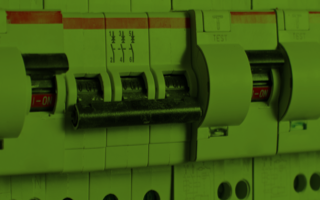




Capacitor Banks
Eliminate the reactive energy surcharge
Frequently Asked Questions
- Active energy: the electrical receivers powered by an electrical current convert electrical energy into mechanical power and heat. This is called "active energy" and it is measured in kWh.
Receivers formed by pure impedance (heating devices, incandescent lamps, etc.) only use this type of energy. - Reactive energy: there are many receivers, such as motors, transformers, reactors, etc., that need to form magnetic fields to work. This equipment, usually inductive, absorbs energy from the grid to create the magnetic fields and returns it while they disappear. With this energy exchange, an extra usage is generated which the receivers cannot use. This energy is called "reactive energy" and it is measured in kVArh. The reactive energy overloads lines, transformers and generators without producing useful output. However, the electricity bill does account for it, and therefore it may increase the bill by considerable amounts.
- Power factor (cosΦ): the ratio of an installation's active and apparent energy usage. Apparent energy depends on active and reactive energy. For the same active energy usage, the greater the reactive energy usage the lower the power factor and the greater the cost (if cosΦ is lower than a given value).
If your company's electricity bill includes a reactive energy cost, there is a simple technical solution to get rid of this cost: install a capacitor bank.
Iberdrola provides a turnkey installation service for these banks so that the customer does not have to worry about anything.
Capacitor banks are devices that due to their capacitive nature reduce the grid's reactive energy demand, cutting down or eliminating its cost on the electricity bill.
Iberdrola usually sells automatic capacitor banks. Depending on the reactive energy demand of the receivers in the installation, more or fewer capacitors will be connected, always adjusting the power factor to the selected value.
Because the characteristics of the electrical installation where the reactive usage needs to be offset play a decisive role in the choice of the type of capacitor bank to be installed. This is why advice from an expert in the field, such as Iberdrola no doubt is, is very important.
For instance, if your installation has a high harmonic distortion rate, you will need to install capacitor banks with a harmonic filter. If conventional banks, i.e. without a harmonic filter, were installed, the service life of those banks would be reduced dramatically and other problems could arise in the electrical installation (resonance phenomena, etc.).